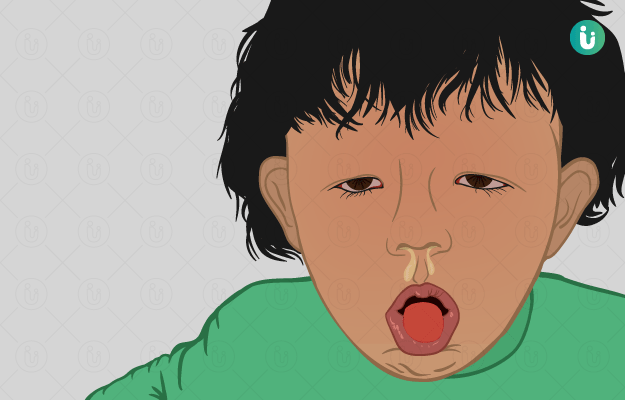What is whooping cough?
Whooping cough, also known as pertussis, is a contagious bacterial infection caused by Bordetella pertussis that can affect people of all age groups, but is more common in vulnerable groups such as unimmunized infants.
What are its main signs and symptoms?
The symptoms of whooping cough appear between a duration of six to twenty days, known as the incubation period of acquiring infection and has three phases of symptoms:
- The catarrhal phase lasts for around one week and presents with symptoms such as runny nose, watery eyes, conjunctivitis, sore throat, sneezing, and slightly raised temperature.
- The paroxysmal phase lasts for one week and presents with symptoms such as intense coughing fits, cough with expectoration, vomiting, and blueness of the skin in severe cases.
- The convalescent phase lasts up to 3 months and symptoms gradually decrease in intensity and frequency.
What are the main causes?
Whooping cough is a bacterial infection caused by the organism Bordetella pertussis. The bacteria enter the lungs and cause swelling and irritation of the airways, mainly the windpipe and bronchi, leading to various respiratory complications. The infection is highly contagious and spreads from person to person through nose, mouth or eyes when the infected person coughs or sneezes and comes in direct contact with a healthy individual.
How is it diagnosed and treated?
The diagnosis of whooping cough includes:
- Patient history taking
- Clinical examination
- A nasal swab or aspirate for polymerase chain reaction (PCR) testing
- Culture test
- Pertussis serological tests
Treatment of whooping cough includes early administration of antibiotics based on the physician’s clinical judgment.
Preventive measures include pertussis vaccination for infants and adults as per the national immunization scheme. Full dose diphtheria, tetanus, and pertussis vaccine are administered to children. For adults who have completed their primary vaccination schedule, a booster dose is administered.

 Doctors for Whooping Cough (Pertussis)
Doctors for Whooping Cough (Pertussis)  OTC Medicines for Whooping Cough (Pertussis)
OTC Medicines for Whooping Cough (Pertussis)
 Whooping Cough (Pertussis) articles
Whooping Cough (Pertussis) articles

 Home Remedies for Whooping Cough (Pertussis)
Home Remedies for Whooping Cough (Pertussis)






 Dr. Laxmidutta Shukla
Dr. Laxmidutta Shukla











